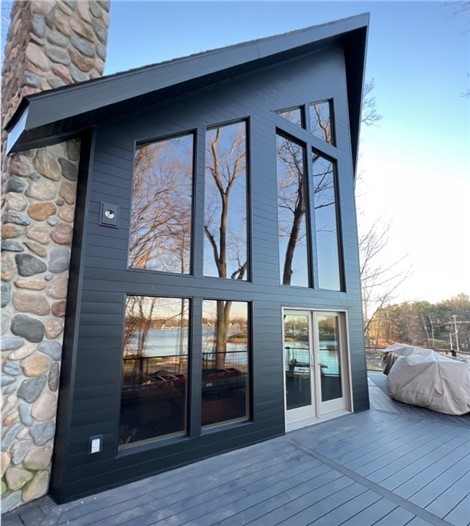If you're a proud owner of a wooden deck, you're likely familiar with the joys of outdoor living and the beauty of natural wood. However, there may come a time when you notice some unwelcome visitors buzzing around your deck - carpenter bees. These bees, while fascinating creatures in their own right, can pose challenges when it comes to maintaining the integrity and aesthetics of your wood deck. So, let's delve into the world of carpenter bees and explore ways to coexist with them while protecting your beloved outdoor space.

Photo Credit: https://bestbeebrothers.com/
**
Carpenter bees are large, solitary bees that are known for their ability to excavate tunnels in wood. The females are capable of drilling perfectly round entry holes into various wooden structures, including decks, fences, eaves, and even outdoor furniture. Once inside, they create galleries to lay their eggs and rear their young.
The Challenge with Wood Decks
While carpenter bees are beneficial pollinators and rarely cause significant damage to structural wood, their drilling can weaken the integrity of wooden decks over time. Additionally, their presence can be off-putting, as some people fear their resemblance to bumblebees and worry about the potential for stings. Therefore, it's understandable that homeowners want to discourage carpenter bees from nesting in their decks while still respecting the ecological role of these insects.
Coexistence Strategies
1️⃣ Prevention: The best defense against carpenter bees is prevention. When constructing or renovating your deck, consider using pressure-treated or naturally resistant wood species, such as cedar or redwood. These woods are less appealing to carpenter bees due to their natural oils and resins. Applying a protective sealant or stain to your deck can also make the wood less attractive for nesting.
2️⃣ Filling Holes: If you notice carpenter bee activity, such as round entry holes, it's important to address the issue promptly. Once the bees have emerged, usually in late spring or early summer, fill the holes with wood putty or a suitable wood filler. Ensure the filler matches the color of your deck for a seamless finish.
3️⃣ Deterrents: Carpenter bees are generally deterred by strong scents and certain materials. Consider hanging a few natural deterrents around your deck, such as citronella candles, lavender sachets, or bags of cloves, to discourage carpenter bees from nesting. While these methods may not offer foolproof protection, they can help reduce bee activity.
4️⃣ Traps: Carpenter bee traps are commercially available and can be effective in capturing and removing the bees without causing harm. These traps typically consist of wooden boxes or tubes with an entrance and a collection jar. By luring the bees into the trap with enticing scents or visual cues, you can relocate them away from your deck.
5️⃣ Professional Assistance: If carpenter bee infestation becomes a persistent problem despite your efforts, it might be wise to seek professional assistance. Pest control experts or local beekeepers can provide advice, guidance, and safe removal options tailored to your specific situation.
The Importance of Pollinators
While carpenter bees can present challenges for wooden decks, it's important to remember their critical role as pollinators. Bees, including carpenter bees, play a vital part in the pollination of plants, which contributes to the overall health and diversity of ecosystems. As stewards of the environment, we should strive for a balance between protecting our living spaces and our environment.
If you're not having luck with any of the strategies above, it might be time to consider upgrading your deck to composite decking. We offer free estimates and renderings. Give us a call today to learn more at 269-685-0900.
Tags
Subscribe to Hutcherson Construction's Blog









Comments